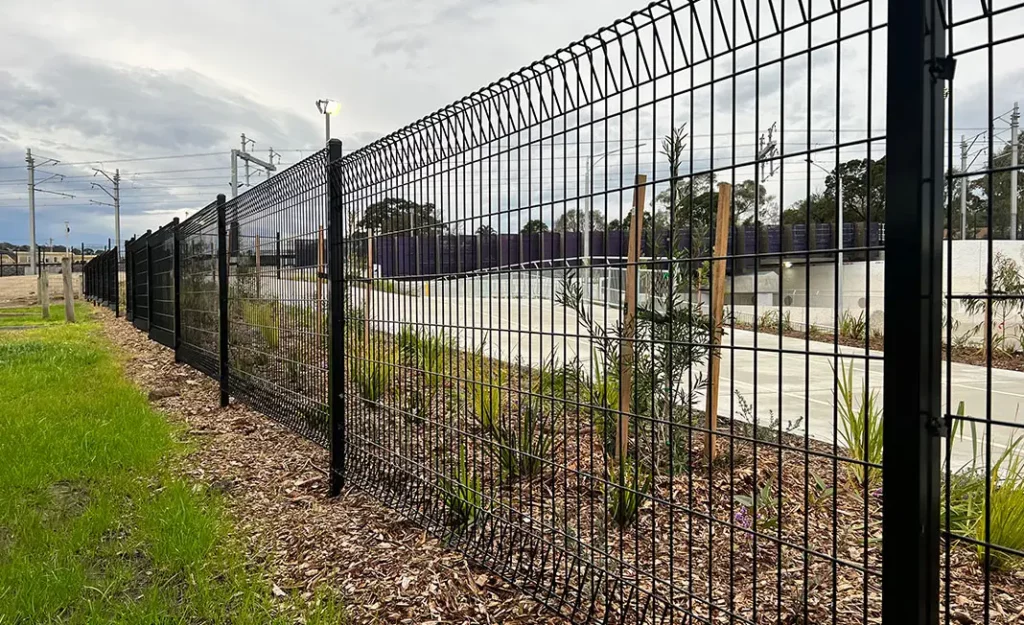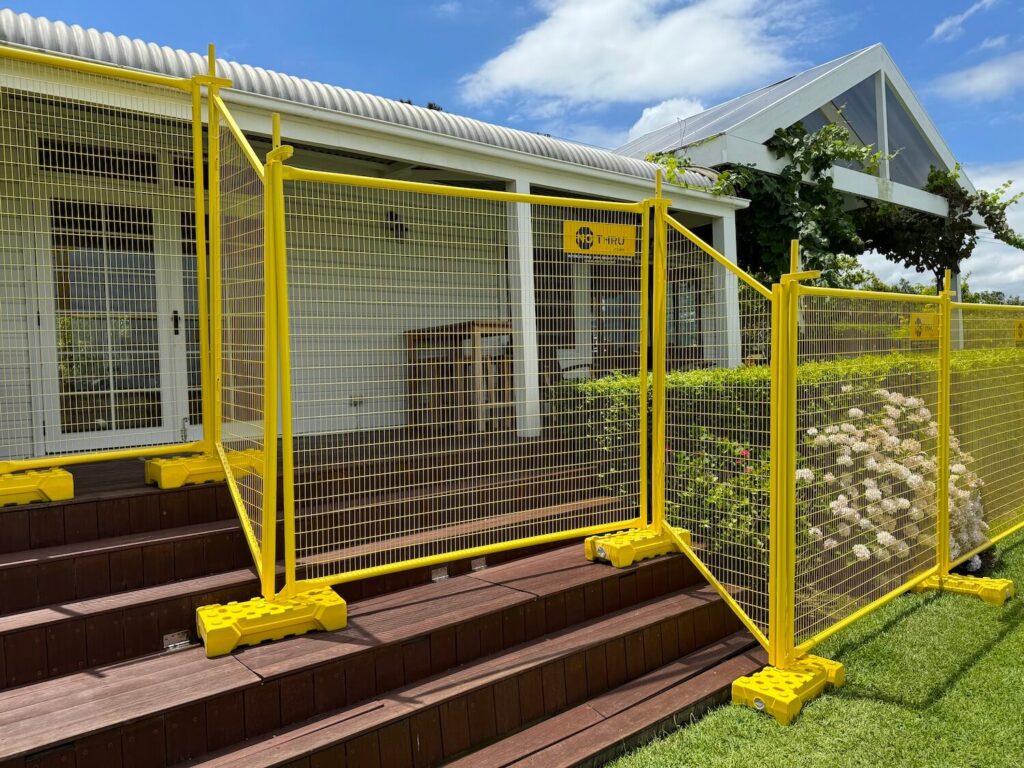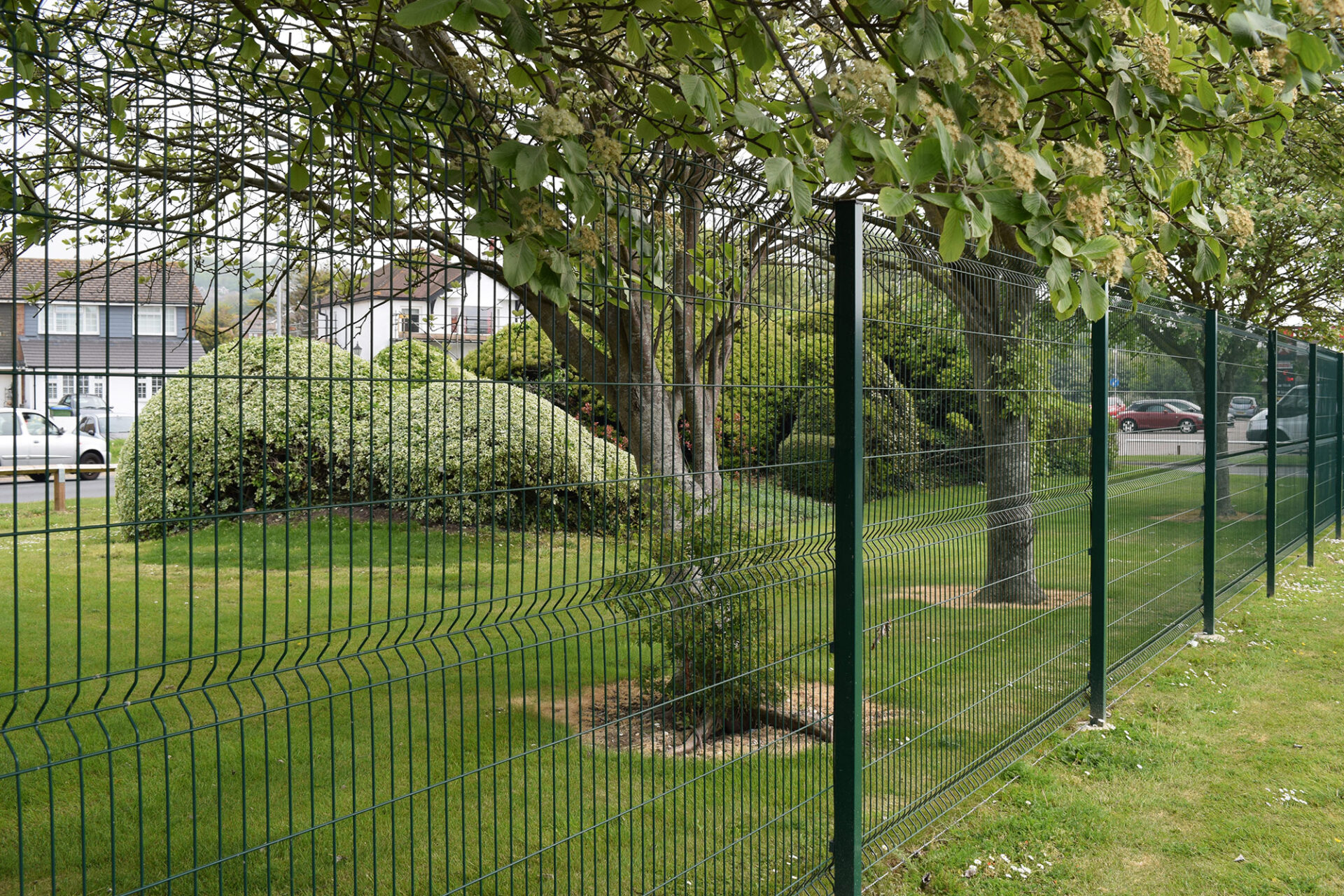Construction site security is crucial for successful project management in Australia’s building industry. Whether it’s a residential development or a large commercial project, protecting valuable assets, equipment, and ensuring worker safety is essential.
Australian construction companies are increasingly turning to mesh fencing as their preferred solution for robust site security. This versatile measure not only creates a physical barrier to define site boundaries but also allows for visibility to monitor safety.
The Advantages of Mesh Fencing
Mesh fencing is a proven solution for construction site security across Australia. Its versatility, durability, and adaptability make it an essential investment for construction managers focused on protecting assets and ensuring workplace safety.
There are several key advantages to implementing mesh fencing on construction sites:
- Deterrent Effect – The visible presence of professional-grade fencing discourages unauthorised entry attempts
- Asset Protection – Secure containment of valuable equipment, materials, and machinery
- Safety Compliance – Clear demarcation of hazardous areas to protect both workers and the public
- Site Management – Controlled access points for authorised personnel and vehicles
Addressing Unique Challenges
Australian construction sites face specific challenges such as harsh weather conditions and urban security concerns. Mesh fencing offers a practical and cost-effective solution that can adapt to these demands while adhering to strict industry regulations.
The increasing use of mesh fencing in Australian construction projects demonstrates its effectiveness in creating secure, compliant, and well-managed work environments. It has become an essential part of modern construction site planning.

Understanding Mesh Fencing for Construction Sites
Mesh fencing consists of strong wire panels welded together to create a robust barrier around construction sites. The panels feature uniform grid patterns with openings designed to prevent climbing while maintaining visibility through the fence line.
Learn more on: Where to Buy LVL Timber for Your Next Formwork Job
Common Types of Mesh Fencing in Australia:
- Temporary Mesh Fencing: Quick installation and removal, interlocking panels with sturdy bases, heights ranging from 1.8m to 2.4m, ideal for short-term projects and changing site boundaries.
- Permanent Welded Mesh: Heavy-duty galvanised steel construction, deep-set concrete footings, anti-climb mesh patterns, suited for long-term development sites.
- High-Security Mesh: Reinforced wire thickness, smaller openings to prevent tool insertion, additional anti-tamper features, essential for high-risk urban locations.
Project-Specific Applications
Different construction scenarios demand specific mesh configurations:
- Residential Developments: Standard temporary mesh with privacy screens
- Commercial Sites: Heavy-duty welded mesh with controlled access points
- Infrastructure Projects: High-security mesh with surveillance integration
- Multi-Stage Developments: Modular systems that can be reconfigured
The structural integrity of mesh fencing relies on proper installation methods. Panels must be securely connected with approved coupling systems and supported by appropriate bracing at regular intervals. Australian standards require specific panel weights and wire diameters to ensure adequate strength against environmental forces and potential security breaches.
Wind loading considerations play a crucial role in mesh selection, particularly for exposed sites. Coastal areas typically require additional bracing and corrosion-resistant materials to maintain long-term effectiveness. Urban construction sites often incorporate shade cloth attachments to control dust and debris while maintaining the security benefits of the mesh structure.
Key Benefits of Using Mesh Fencing for Site Security
Mesh fencing delivers substantial advantages for construction site security, making it a preferred choice across Australian building projects.
1. Robust Durability
- Heavy-duty galvanised steel construction resists harsh weather conditions
- Anti-rust coating extends product lifespan
- Withstands impacts and attempted breaches
- Maintains structural integrity throughout project duration
2. Enhanced Visibility
- Clear sight lines allow security personnel to monitor site activities
- Transparent design helps identify potential security threats
- Natural light penetration improves worker safety
- Enables CCTV systems to capture clearer footage
3. Quick Installation & Flexibility
- Modular panels connect rapidly with minimal tools required
- Temporary bases allow repositioning as site needs change
- Single worker can manage basic installation tasks
- Adaptable to irregular terrain and site boundaries
4. Cost-Effective Security Solution
- Reduced labour costs through simple installation
- Lower maintenance requirements compared to solid hoarding
- Reusable across multiple projects
- Minimal storage space needed between uses
5. Real-World Success: Sydney CBD Development
A major commercial development in Sydney’s CBD implemented mesh fencing across its 2,500m² site perimeter. The project manager reported:
“Our mesh fencing system prevented multiple attempted break-ins while maintaining essential sight lines for our security team. The ability to quickly reconfigure sections during different construction phases saved valuable time and resources.”
6. Melbourne Infrastructure Project Case Study
Melbourne’s Eastern Freeway expansion utilised mesh fencing to secure multiple work zones:
- 60% reduction in security incidents
- 40% faster installation compared to traditional hoarding
- Successfully deterred vandalism attempts
- Improved community relations through maintained visibility
Mesh fencing systems prove particularly valuable in urban construction environments where site security must balance effectiveness with public safety and aesthetic considerations.
Important Considerations When Choosing Mesh Fencing
Selecting the right mesh fencing involves careful consideration of several key factors to ensure the best security for your site. Taking a strategic approach to choosing mesh fencing can greatly improve safety and efficiency for your project. Read more about efficiency at https://energyeducation.ca/encyclopedia/Efficiency
1. Height Requirements
- Standard heights range from 1.8m to 2.4m
- High-risk areas might require 3m or taller barriers
- Local council regulations often dictate minimum height specifications
2. Anti-Climb Features
- Mesh aperture size affects climbing difficulty
- Integrated top rails with anti-tamper fixings
- Optional extension arms for additional security
- Curved or angled top sections to deter scaling
3. Site-Specific Considerations
- Ground conditions and terrain variations
- Wind load requirements for exposed locations
- Access points and gate placement
- Visibility requirements for CCTV coverage
4. Material Specifications
- Hot-dip galvanised steel for corrosion resistance
- Wire diameter suitable for expected stress levels
- Weld strength at mesh intersections
- UV-resistant coating for prolonged outdoor exposure
5. Panel Design
- Rigidity and structural integrity
- Connection methods between panels
- Edge finishing and safety considerations
- Compatible with additional security measures
6. Installation Requirements
- Base plate or in-ground mounting options
- Bracing needs for temporary installations
- Equipment access considerations
- Soil composition and foundation requirements
The selection process should take into account any risk assessments and specific security protocols for the project. It’s also important to comply with Australian Standards, especially AS 4687-2007 for temporary fencing installations.

Ensuring Compliance with Regulations and Safety Standards
Australian construction sites must follow strict rules for installing mesh fencing. These rules are outlined in the Work Health and Safety (WHS) Regulations and include:
- Minimum height requirements of 1.8 metres for temporary fencing
- Anti-tamper features at access points
- Regular inspection and maintenance protocols
- Clear signage placement requirements
Local council regulations can vary from one area to another, and they may have specific requirements such as:
- Fence positioning relative to property boundaries
- Maximum allowable heights
- Visual impact considerations
- Permit requirements for temporary installations
Key Safety Standards to Consider:
- AS 4687-2007: Temporary fencing and hoardings
- AS 1725.1-2010: Chain-link fabric security fencing
- AS 2423-2002: Coated steel wire fencing products
Practical Compliance Tips:
- Document all fence inspections and maintenance activities
- Install appropriate warning signs at regular intervals
- Maintain clear access routes for emergency services
- Ensure proper lighting around perimeter fencing
- Conduct regular risk assessments of the fencing system
Site managers should create a compliance checklist that covers:
- Physical security measures
- Access control procedures
- Emergency response protocols
- Regular maintenance schedules
- Documentation requirements
To ensure compliance with Australian standards while keeping the site secure, it’s important to have professional installation done by certified contractors. Additionally, conducting regular audits and updates to security protocols will help keep mesh fencing systems in line with changing regulations.
Enhancing Security Further: Integrating Technology with Mesh Fencing
Modern construction site security demands a multi-layered approach. Mesh fencing systems now seamlessly integrate with advanced technological solutions to create robust security networks.
Smart Surveillance Integration
- High-definition CCTV cameras mounted on mesh fence posts
- Motion sensors with instant alert capabilities
- Infrared technology for night-time monitoring
- Remote viewing access through secure mobile applications
Access Control Systems
- Electronic gate mechanisms with keycard readers
- Biometric scanners for authorised personnel
- Digital logging systems tracking entry/exit times
- Temporary QR code access for delivery vehicles
Advanced Monitoring Features
- AI-powered perimeter detection
- Real-time breach notifications
- Automated emergency response protocols
- Integration with site management software
Smart Lighting Solutions
- Motion-activated LED floodlights
- Solar-powered security lighting
- Programmable illumination schedules
- Energy-efficient sensor networks
These technological enhancements transform standard mesh fencing into intelligent security barriers. Site managers can monitor multiple access points simultaneously, while automated systems maintain constant vigilance. The combination of physical barriers and digital surveillance creates a comprehensive security shield that adapts to various threat levels.
Australian construction companies increasingly adopt these integrated solutions to protect valuable equipment and materials. The initial investment in technology-enhanced mesh fencing systems typically results in reduced security personnel costs and improved incident response times. Click here to find more about equipment.
The Eco-Friendly Aspect: Reusability and Storage Benefits of Temporary Mesh Fencing Solutions
Temporary mesh fencing is a sustainable choice for construction sites in Australia. It offers significant environmental advantages because it can be reused for multiple projects. These versatile panels help reduce waste and minimise the impact of construction site security on the environment.
Key Environmental Benefits:
- Reduced material consumption
- Decreased landfill waste
- Lower carbon footprint from manufacturing
- Minimal site impact during installation and removal
The durability of quality mesh fencing panels enables repeated use across different construction projects, making them a cost-effective and environmentally responsible choice. A single set of panels can serve multiple sites over several years when properly maintained.
Proper Storage Guidelines:
- Store panels flat on raised platforms
- Keep away from direct ground contact
- Protect from extreme weather conditions
- Use appropriate covers to prevent rust
- Stack panels with protective separators
Maintenance Tips for Extended Lifespan:
- Regular inspection for damage
- Prompt repair of bent sections
- Removal of debris and dirt
- Application of rust-prevention treatments
- Professional cleaning when required
The modular nature of temporary mesh fencing allows for easy dismantling and compact storage between projects. This space-efficient design reduces transport requirements and storage costs while maintaining panel integrity.
Proper care during storage periods ensures panels remain in optimal condition for future use. Construction companies can maximise their investment by implementing systematic maintenance schedules and following manufacturer-recommended storage practices.
The Australian construction industry’s growing focus on sustainable practices makes temporary mesh fencing an attractive option for environmentally conscious project managers seeking reliable site security solutions.
Conclusion
The combination of strong physical barriers with modern security technologies creates a comprehensive site protection system that meets today’s complex security challenges. From temporary installations to permanent solutions, mesh fencing delivers reliable performance while supporting sustainable construction practices.
Looking for expert guidance on mesh fencing solutions?
At Covert Procurement, we specialise in delivering high-quality mesh fencing systems that align with Australian construction standards and site-specific requirements. Our range includes long-lasting Chain & Shade Mesh that is fireproof, UV-treated, and hot-dipped galvanized for lasting protection.
Our team brings extensive industry knowledge to help you:
- Select appropriate mesh fencing configurations
- Implement effective security measures
- Maintain compliance with safety regulations
- Maximise your security investment
In addition to mesh fencing, we also offer a variety of other products such as F14 and F17 grade formwork plywood, Structural Laminated Veneer Lumber (LVL), and Reo-Bar Safety Protection Strips designed to enhance safety on construction sites.

